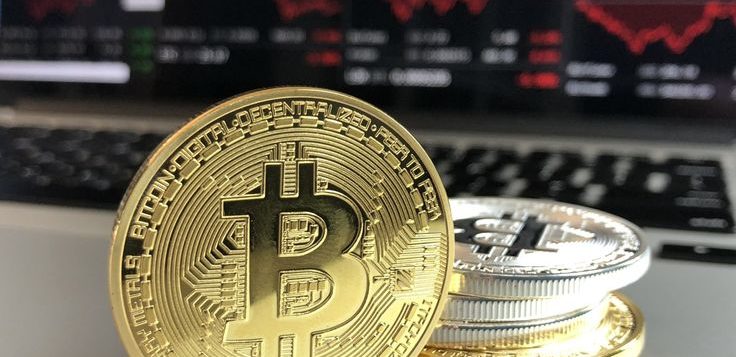When the price of Bitcoin rallied 33% in April, some cryptocurrency investors decided it was time to get out, rather than hang on in hopes of a continued surge.
It has been more than six months since Bitcoin peaked at roughly $20,000 in December, and the subsequent 70% crash and sustained bear market in cryptocurrencies has tested the patience of investors—particularly those who bought in amid the frenzied exuberance late last year.
Crypto enthusiasts have long urged each other during market selloffs to “hodl”—a onetime typo for “hold” that has since been embraced as an acronym for “hold on for dear life”—but new data suggest their faith in the principle is waning.
Customers of Coinbase, the largest U.S. cryptocurrency exchange, withdrew more from the company than they deposited in April, according to exclusive data from Chime, a San Francisco-based bank startup that offers free checking accounts.
Withdrawals from Coinbase have been increasing relative to deposits since December, when the Bitcoin price peaked at $20,000. But April was the first and only month in which the money flowing out of Coinbase actually exceeded the money flowing in, Chime’s data shows. During that month, investors took 37% more money out of Coinbase than they put in—withdrawing $1.37 for every dollar deposited.
Deposits to Coinbase outweighed redemptions in May, but it was only by a 10% margin—putting in $1.10 for every dollar withdrawn.

The analysis is based on the behavior of roughly 500,000 of Chime’s active customers—most of whom are between ages 25 and 35—and therefore may not fully reflect the activity of Coinbase’s more than 20 million users. Coinbase, which declined to comment, also caters to institutional and sophisticated investors, a demographic that is unlikely to be represented among Chime customers, many of whom are attracted by free debit cards and paycheck advance offerings.
Still, the trend revealed by the data is notable because it highlights negative sentiment among this subset of investors in April, a month when cryptocurrency prices were rising, as opposed to panic selling during a market plunge. That gap is a sign that they’ve turned pessimistic in their outlook for Bitcoin, and lack confidence in its recovery.
The pattern also reflects a recent class of rookie cryptocurrency investors looking for quick profits, who are unused to the roller-coaster price swings in Bitcoin and its ilk.
“You have a kind of washing out of momentum investors…investors who were not really taking a longterm point of view,” says Chad Cascarilla, the cofounder and CEO of Paxos, an institutional trading firm that also operates Bitcoin exchange itBit.
Indeed, the influx of new money that piled into Bitcoin as its price swelled in 2017 often came from young, inexperienced investors, with millennials disproportionately likely to invest in cryptocurrency compared to other age groups. Chainalysis, which tracks cryptocurrency transactions recorded on the blockchain (or digital ledger), found enormous turnover between the crypto old money and newbies, with long-term investors selling $15 billion worth of Bitcoin to “new speculators” in December alone, according to the Financial Times.
Brian Armstrong, the CEO of Coinbase, seemed to acknowledge in a tweet last week that the prolonged downturn had made some investors give up on cryptocurrencies, “get[ting]rid of the people who are in it for the wrong reasons.”







